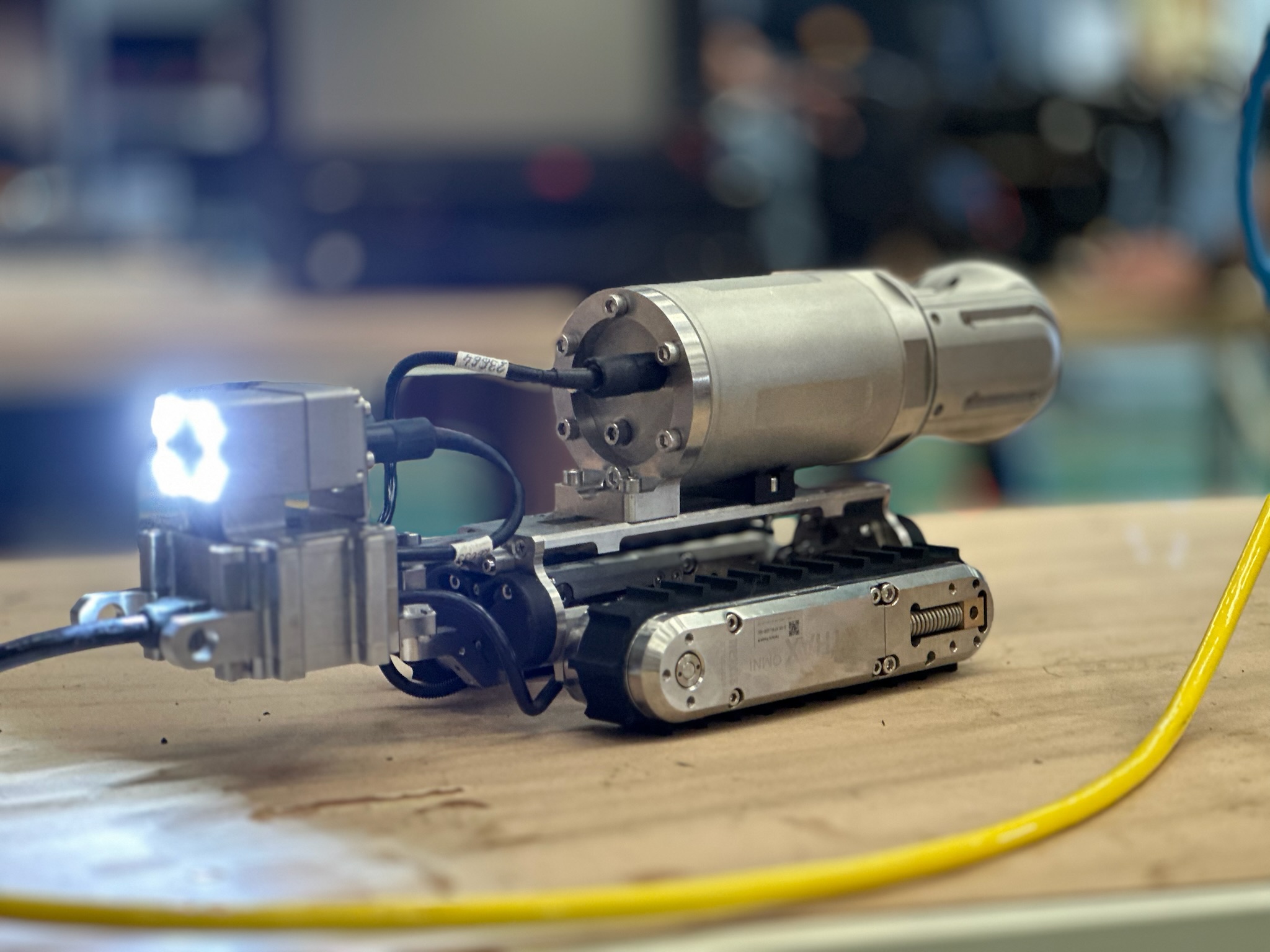Safety First: Risk Considerations when Deploying Crawler Technology

Crawlers provide a cutting-edge solution to many inspection tasks. Whether manually driven, semi-autonomous or even those pushing the boundaries towards fully autonomous operation, crawler implementation requires a robust pre-task risk assessment for safe deployment. During use, adhering to strict safety regulations ensures that everyone in the vicinity remains safe and that the asset itself doesn’t sustain any damage.
6 Vital Safety Tips for Safe Crawler Deployment
Crawlers are commonly used to inspect pipework – although with the introduction of custom crawler technology, they’re now a valuable tool for an almost infinite range of maintenance tasks, such as interior tank surface inspection and assets with complex internal geography.
Whatever the scenario, the following steps are crucial to avoid damage and injury.
- Use the right crawler for the task: Today’s crawler tech is advanced enough to traverse pretty much every interior or exterior landscape. Some use tracks, others provide magnetised traction, some can climb vertically and there are specific crawlers to navigate small, tight spaces. It’s important to use the right traction technology for the situation. Different crawlers, such as the Snowcat and the Panther are prime examples of versatile systems that can tackle a wide variety of confined space inspections.
- Personal safety and PPE: Crawler systems can be heavy. For example, the Versatrax magnetic pipe inspection camera can weigh anything up to 105 kg – a sizeable load that could easily cause injury with careless use. Without fail, every member of an inspection team should be fully kitted out with PPE. This would include safety boots, safety vests, hard hats and gloves at the minimum. Lifting protocols should be strictly observed and all personnel should have undergone the necessary training before use. This should include overhead lifting instructions if a crane or lifting gear is utilised. Naturally, any local legislation and guidelines should also be followed.
- System safety: Every crawler manufacturer provides advice on how many people should operate the equipment. The number will depend on the crawler and the scenario. For example, a crawler that’s used for pipe inspection might require two handlers to deploy the physical piece of equipment, such as lowering it in and out of entry points, checking for horizontal and vertical clearance, operating a winch etc, plus a further person to man the console.
- Good communication: All members of the team should be in constant contact with each other. This might mean using radios or other remote comms. Mobile phone, Bluetooth or other Wi-Fi-enabled tech can be used, but always ensure radio back-up in case of a comms system failure.
- Site safety: Whether the inspection is taking place in a public location (such as along the side of a highway) or a more restricted industrial location (mining site, oil rig etc), the surrounding area must be clearly marked and only essential personnel are permitted entry.
- Consider any other safety aspects: Because crawlers are used in so many situations, it’s impossible to define every type of risk assessment. Examples of robotic crawler use include surveillance during refuelling pressure vessels, inspecting areas that are hazardous to humans – such as a collapsed mine shaft or non-oxygen atmosphere – the interior of storage tanks or even the pipework of an HVAC system. Whatever the scenario, a strict pre-assessment should take place to produce a dynamic risk assessment that all personnel should be aware of.
Nexxis works with clients to define the ultimate solutions for every kind of inspection task. To discover more about the Versatrax, Snowcat and Panther Crawlers or to arrange a demonstration, get in contact with our expert team or request a quote online.
